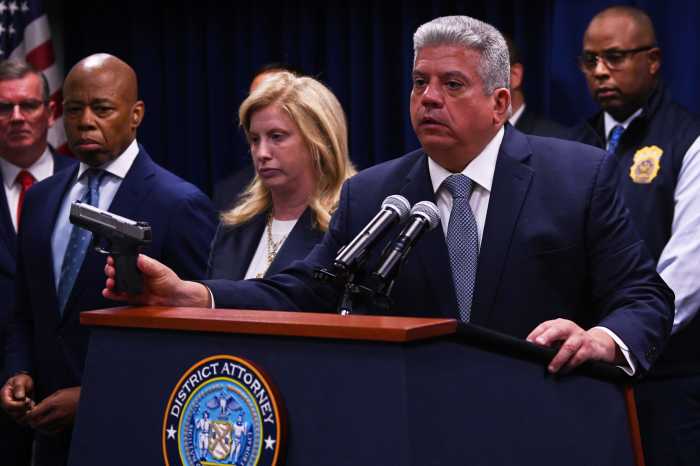The city wants to dispose of abandoned and neglected bikes for good, but an innocent victim is likely to be caught up in the sweep: “ghost bikes,” the white memorial two-wheelers affixed to intersections where cyclists are killed.
Several community groups are lashing out at new bike clean-up rules proposed by the Department of Sanitation, livid that the measure would sweep away the beloved symbols along with undeniably abandoned two-wheelers.
Under the proposal, workers would remove a stationary bike if it’s chained to public property and also has three or more of these characteristics:
• It appears to be unusable.
• It is missing parts, other than the seat and front wheel, including, but not limited to, handlebars, pedals, rear wheels and chains.
• It has flat or missing tires.
• The handlebars or pedals are damaged, or the rims are bent.
• At least 75 percent of the bicycle is rusted.
• It is a ghost bike, regardless of its condition.
That last condition, which does not take into account that ghost bikes are maintained as memorials, infuriated cyclists.
“The rules themselves define ghost bikes as ‘derelict,’ ” said Leah Todd, spokeswoman for the NYC Street Memorial Project, which erects the memorials. “Nobody is in favor of these rules. Nobody.”
Department officials wouldn’t comment on the issue this week, except to say that the new rules will most likely be implemented by October. At a meeting last week, a spokeswoman defended the department by reminding attendees of something they all know: abandoned, trashed bikes are bad for neighborhoods. “We’ve noticed an increase in the number of bicycles affixed to property, including traffic signs and parking meters,” said spokeswoman, Madelynn Liguori. “These bicycles are an eyesore, a potential public safety hazard and a constant source of complaints.”
There’s still time for the department to change the rules in regards to ghost bikes, though Todd said she isn’t holding her breath.
This isn’t the first time that cyclists have fought over the removal of the memorials. In 2007, the city removed one that honored the 34-year-old bike messenger Jonathan “Bronx Jon” Neese, who died in 2006 near the corner of S. Fourth and Roebling streets in Williamsburg. The mourners later replaced the bike and registered it with the city.
Back then, there were 27 ghost bikes in the city. Now there are 70. The monuments may be adding up, but their numbers have not been a cause of concern at the community board level, at least. Brooklyn Heights’ Community Board 2 called for the memorials’ safety in July.
“We ask that language regarding ghost bikes be removed from this proposal altogether,” a board resolution stated. “Such rules should reflect that ghost bikes will not be summarily disposed of without special outreach procedures, to include families of victims.”





















